At the Supreme Court’s asking, a rights group in Manipur is sorting through files pertaining to over 1,528 victims of alleged extra-judicial killings to place before the judges.
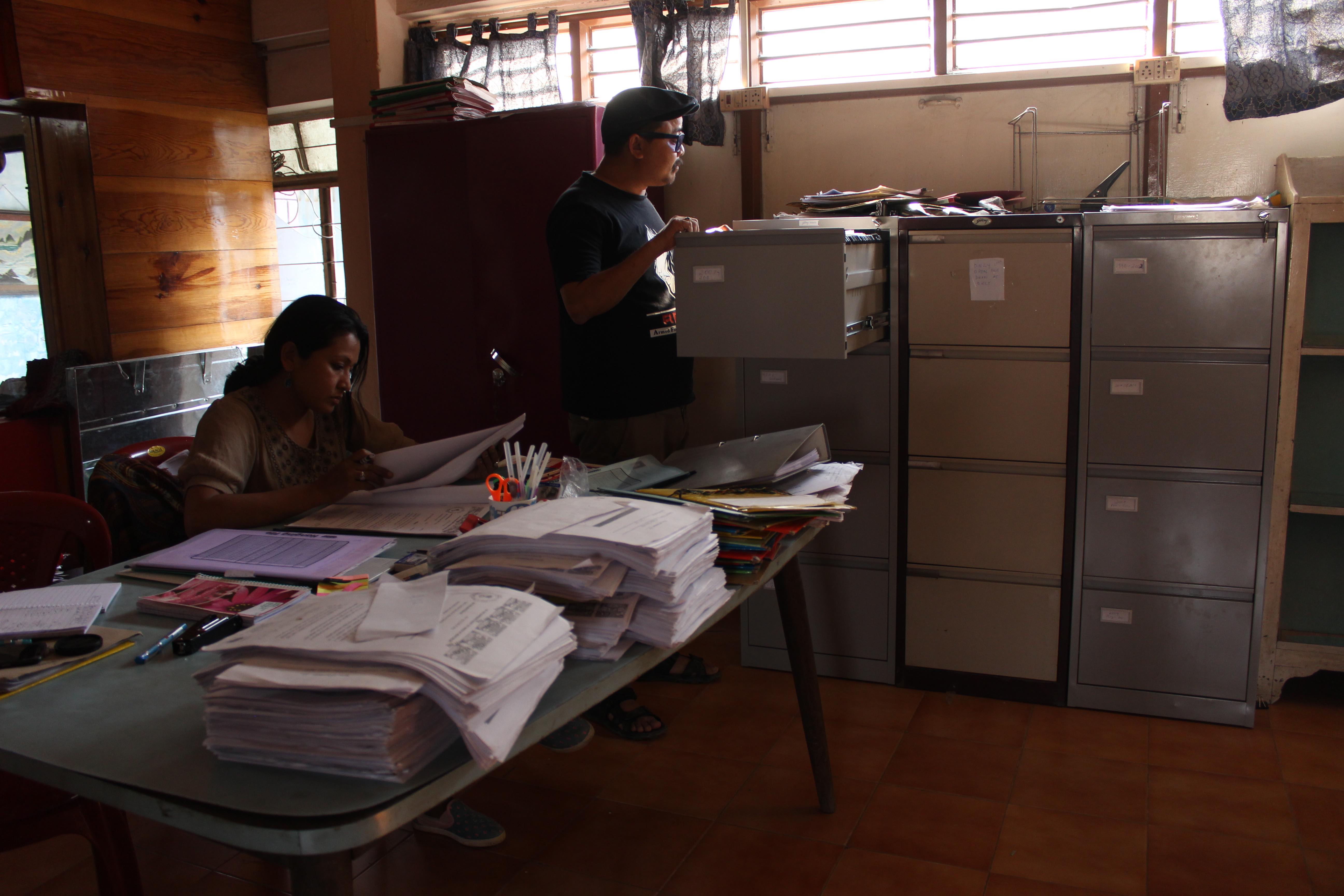
Imphal (Manipur): What do 1,528 dead bodies look like? Three filing cabinets. In a dimly lit, dusty room in Manipur’s capital, thousands of files sit, marked or unmarked, as members of the Extra-Judicial Execution Victim Families Association (EEVFAM) sort them into various categories. These files pertain to the victims of alleged extra-judicial killings and fake encounters in the state since 1979.
The Armed Forces (Assam and Manipur) Special Powers Act (AFSPA) was enacted in 1958. The Act has been controversial – Section 4(a), for example, empowers the armed forces to fire upon the public, “even to the causing of death”; Section 6 provides the government’s security force immunity from prosecution. Nearly 60 years of AFSPA in Manipur has seen thousands of mostly young men killed for being suspected militants.
Based on the EEVFAM’s submissions, a wide range of alleged fake encounter cases are before the Supreme Court this week. Some of them are from prominent and exceptional incidents, such as the 12 people (including five minors) who were killed in a firing at the Raj Bhavan in 2001 by the Central Reserve Police Force (CRPF). But the bulk of them point more to the banality of violence in Manipur.
Laikhuram Boinao was killed while going to buy Cerelac for his baby in 2007, allegedly by the Imphal East Commandos. Abdul Karim went out to eat paan and was killed at the gate of his house in 2008, allegedly by a team of the Imphal East Police Commandos and 32 Assam Rifles. Seventy-five-year-old Waikhom Mani Devi, one of the oldest victims, was killed in her bed in 2011, allegedly by the 15 Assam Rifles. Wahengbam Nabachandra Singh was shot and killed inside his toilet in 2001, allegedly by the Border Security Force. Nearly no one and nowhere was safe for the people of Manipur.

In an order incredible for its times, the Supreme Court on July 8 last year said that “the use of excessive force or retaliatory force by the Manipur Police or the armed forces of the Union is not permissible.” This was in response to a petition filed in 2012 by Human Rights Alert (HRA) and EEVFAM, asking for an investigation into allegations of fake encounters in Manipur. “Each instance of an alleged extra-judicial killing of even such a person would have to be examined or thoroughly enquired into to ascertain and determine the facts,” the court said. It came as a relief to the petitioners, who had been working on the issue for nearly 18 years, documenting thousands of cases of killings in Manipur alone.
This week, the Supreme Court is hearing the final arguments in what is already a landmark case. The case has the potential of invigorating justice and kicking off similar processes in other parts of India where AFSPA has also been enforced, including Jammu and Kashmir, Assam, Arunachal Pradesh and Nagaland. The government of India has stated in its affidavits that these documented cases are of legitimate encounters between security personnel and militants. The petitioners are asking for an independent probe into them all.
In July, the bench asked the petitioners to go back to Manipur and return with sharper evidence, organised in a manner which would make it easy for the court to parse through 1,528 cases and find a method to administer justice. This is the backstory of the paper trail that is being put together in order to bring justice to the 1,528 victims of alleged fake encounters.
§
Under the mango tree
The mango tree stands tall and alone. The taller it grows, the longer Bahrul Islam’s mother harbours her pain, because “this mango tree was planted where my son was buried 24 years ago,” she says. Islam was killed in 1993, when he was 15 years old. This mango tree is the only one which has grown successfully in that grassy patch of graves. Islam’s father was buried behind his son. The tree planted over his father’s grave did not grow at all.
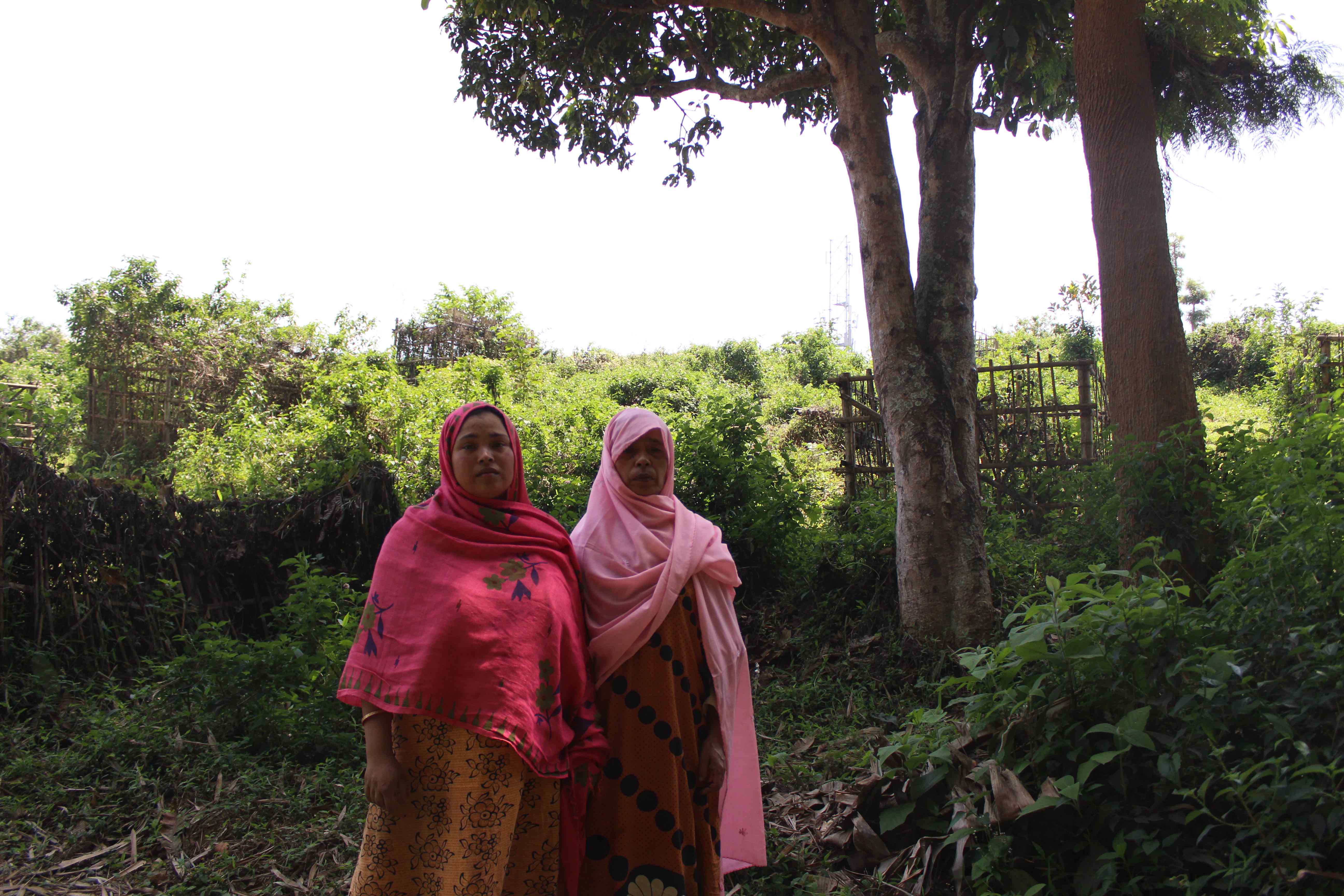
Their story goes like this: Islam was at home studying for an exam on the night of October 28, 1993. “He would sit if you told him to sit and stand if you told him to stand,” his mother says. The family recounts that personnel from 7 Assam Rifles entered the house around 11 pm and asked for Islam’s father. They had accosted some men further down the street and wanted Islam’s father to translate for them. His father was not at home that night. So they grabbed the boy instead. The next morning, the family went to the camp of the Assam Rifles and asked if they could take Islam back home. “They said they will send him back in time for the exam. Later in the afternoon, we realised he was dead,” his mother says.
In the last 24 years, the family hadn’t pursued their case at any serious legal level. They heard a rumour that they had been assigned some compensation, but they never got the money. Until a district coordinator from EEVFAM visited their house, they did not think about pursuing the case. “We have been hearing that people are taking these kind of cases to court. We are hopeful that because of this some witnesses will come out. At the time in 1993, we were too intimidated and confused to do anything,” says Shakila Begum, Islam’s younger sister.
“I pray for Bahrul in my namaaz every day. Five times a day, I pray for his peace and protection.” In her small, unelectrified room, she suddenly says in English, “Only one”. She wasn’t talking about her only son. She was trying to say that she lives here alone.
§
The paperwork of justice
Following the court’s order in July last year, back in Kwakeithel, EEVFAM got down to work. Most members of the association are widows – their husbands have been killed in alleged fake encounters. Yet the women, day after day, listen to and document cases that may sound so similar to their own – of young men pulled out of their houses or arrested on the way to work. Of men who left home alive but often came back dead, riddled with bullets and in clothes they weren’t wearing when they left, usually in military fatigues. For the women at EEVFAM, this is their daily life – for each file, they fill up forms of victims’ details, staple passport photos, attach postmortem reports with photos of dead bodies, paste stamps on affidavits, include anything else such as press clippings and file case after case, in chronological order, in the three large nondescript filing cabinets.
Right now, these are only slim files of papers. When the Supreme Court passes its final judgement, these files could transform into trapdoors leading to the rot of illegality carried out by security personnel, at least in the state of Manipur, under the immunity offered to the army by the AFSPA.
The bench of Madan B. Lokur and U.U. Lalit in July was specific about what they wanted their from EEVFAM: “Present an accurate and faithful chart of cases in a simple tabular form”. The court was essentially asking EEVFAM to condense their filing cabinet of documents into a single, neat Word document with tables. The court asked the petitioners to indicate, in each of the 1,528 cases, if there had been a judicial inquiry, a National Human Rights Council (NHRC) inquiry or a commission inquiry. The court wanted other columns that indicated the result of the inquiry and if there is an FIR, complaint or petition by the victim’s family.
“Don’t ask me why this is happening in Manipur. It is obvious. This happens because the government has ordered it. In Manipur, if you kill someone, you go one rank up.”
This was remarkable – the Supreme Court had asked a citizen’s group to collect and submit information on 1,528 possible fake encounters, on the premise that law enforcement, investigation agencies and even the NHRC had all failed. Thus began the long and tedious paperwork that paves their road to justice.
The EEVFAM went further. Besides 35 cases that have had a commission of inquiry, 37 cases that have had a judicial or high court inquiry and 23 cases that have had an NHRC inquiry, they also submitted other documents in tabular form: 170 cases that only have a written complaint, 78 cases with only an oral complaint, 134 cases with eyewitnesses and 178 cases where the family claims there has been a fake encounter. The unforgettable case of the killing of Thangjam Manorama Devi in 2004 leads the others, as hers is the first entry in the first table of cases.
The court now has with it a shorter list of 655 cases, culled out of the initial long list of 1,528. This list does not even include hundreds of other cases EEVFAM has been gathering, cases that were not brought to their notice in time for their 2012 petition, but which have been emerging due to the movement and momentum that their ground work has caused. But a case in which there is no police complaint and may only have one eyewitness or one oral complaint might be less likely to be pursued, due to the shortage of evidence. In many cases, this is of course the result of families being afraid to report killings or authorities refusing to file cases. But as one reads down the rows of cases, one can see the evidence getting slimmer and justice getting further away for those families.
§
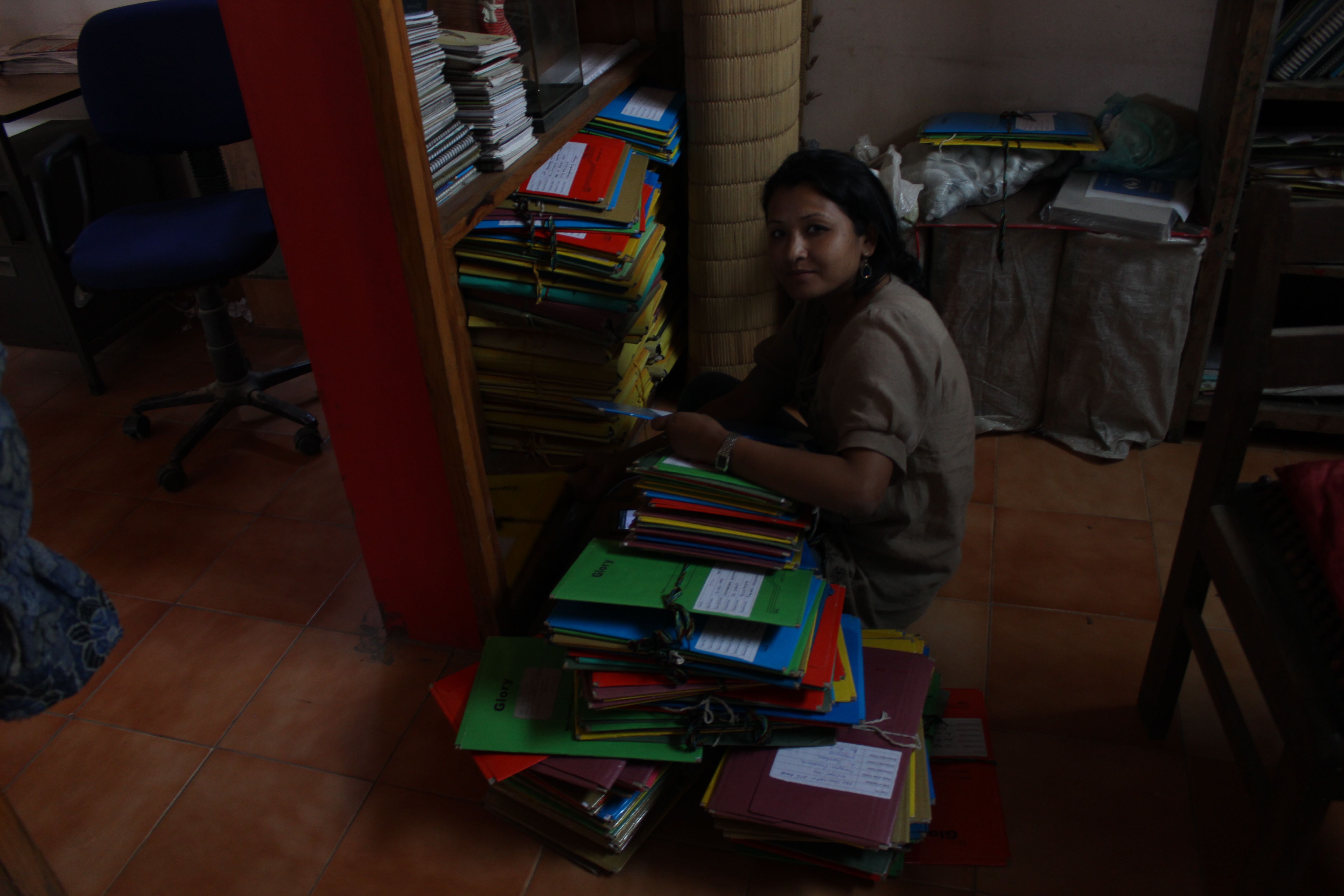
The burden of surviving your children
“Only one,” says Thokcham Kiran’s father. In this case, he was in fact referring to his only son. Kiran was having lunch at home on March 20, 2008, when police commandos entered his house and took him away. “My son was an MA first class. He never talked or did unnecessary things. I don’t know why he was taken away and why he was killed,” he says. The next day, neighbours saw reports on TV that Kiran had been killed. The young man was 31 years old and is survived by his wife and three children.
Kiran’s father then makes a very serious allegation. Around that time, a Congress MLA managed to get him a meeting with a senior politician and a senior police officer. They were both sitting together when he met them. “They told me that the police had said my son is an insurgent. So that’s why he was killed. I got very angry. We asked for proof – which party, what group did he belong to? They said they can’t give us any,” he says.
On the walls of his unlit house, old posters with motivational quotes are peeling off. One says, “IMPOSIBLEISAWORD TOBEFOUNDATTHE FOLISHMENDICTIONARY” (sic). “Don’t ask me why this is happening in Manipur. It is obvious. This happens because the government has ordered it. In Manipur, if you kill someone, you go one rank up.”
In Sora village, Mohammed Nayinmuddin’s father begins to cry in front of his children. Sitting on a low stool, dressed in a lungi, he cries with a shudder. His wife has been crying, but quietly, since he began talking about their little boy Nayimudin, who was 12 years old when he was killed. Photos from Nayimudin’s postmortem fall out of an envelope. An aunt in the house quickly snatches them out of sight of Nayimudin’s mother. The photos show a bullet through the boy’s forehead, with his chest stitched back in a neat braid following the postmortem.
His father begins to recount the story. On the night of July 18, 2013, residents of Sora village heard some shouting and firing from a nearby village. They gathered and proceeded to get closer when a police car drove out and began firing at them. Twelve-year-old Nayimudin was a casualty that night.
The family has not been able to get hold of a copy of the FIR or the postmortem report. “I was told I have to get it from the superintendent of police in Thoubal. I have not gone to see him. I don’t know how to go and ask. I heard they filed 12 charges against my son. How can a 12 year old have 12 criminal charges against him?” he asks.
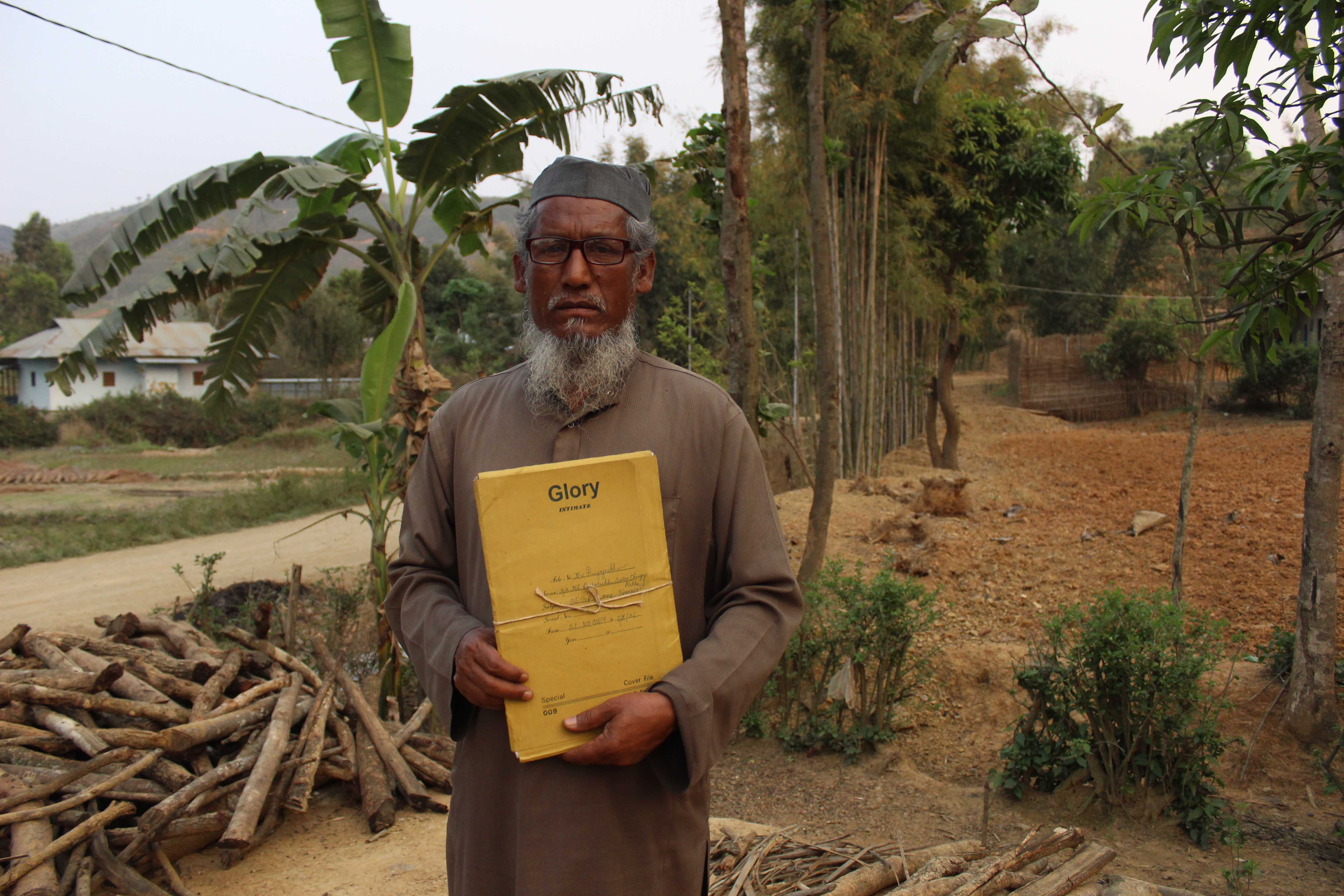
We ask him to tell us about his son. But by now, he can only cry, not speak. “Go to his old school. Ask his principal. They will tell you, he was a good boy.” The family shows us Nayimudin’s reading certificate from grade six. The teacher wrote that year: He is of “Good character” with “Regular attendance”.
§
Against the spirit of the times
On the very day last July when the Supreme Court wrote in the EEVFAM case, “if an offence is committed even by Army personnel, there is no concept of absolute immunity from trial,” Burhan Wani, a commander of Hizbul Mujahideen, was killed in an encounter in Kashmir. He was considered a leader of the militant separatist outfit, believed to be supported by elements in Pakistan.
A few months later, India carried out a ‘surgical strike’ on September 29 against suspected militants in Pakistan-administered Kashmir. Pakistan denied the strike completely. Media investigations contradicted each other. Conflicting reports came in on the number of casualties.
The country was seeing an unprecedented period of the India-Pakistan conflict playing out in Jammu and Kashmir. The state has also been under AFSPA since 1990. While Kashmir protested and saw a prolonged period of violence, in which nearly 90 people were killed, the rest of the country celebrated the encounter of Wani and the surgical strikes. By the end of July, Mehbooba Mufti, chief minister of Jammu and Kashmir, suggested that AFSPA could be revoked in her state on an experimental basis. She was widely criticised.
By the end of last year, eight under-trial prisoners were killed in a Bhopal jail. The police called it an encounter, claiming the men were trying to escape after killing a jail guard. Video footage obtained by CNN News18 showed police firing at a man who was not retaliating.
All through the months after the court’s strong comments on the need to probe extra-judicial killings, its comments were not raised in the public or media discussions. Although it could have been read in conjunction with the several cases that came up in the months following, it was nearly unsafe to consider quoting from it. There was simply no mood. The climax of 18 years of documentation on extra-judicial killings could not have come at a more challenging time for the country.
§
The presumption of guilt
‘Naharol.’
A word that used to simply mean ‘young person’ in Manipur now only means ‘insurgent’. The fact that ‘young man’ and ‘insurgent’ could be used interchangeably is in itself telling of the extent of militarisation – perceived and real – in the state. Family after family speaks with tears and shame about how the men of their house were branded a ‘naharol’ by the police and army, and then killed. Or sometimes they were killed and then called a ‘naharol’.
Going through hundreds of cases tabulated by the EEVFAM for the court, one gets a sense of the extent of militarisation and the atmosphere of violence that Manipur went through during the heat of its violence. While the violence may not be a daily feature anymore, the lack of accountability and poverty of justice remains systemic. Hundreds of security personnel competed for space with Manipur’s insurgents. Between them, since the 1980s, the state was crawling with weapons and men who were uninhibited in using them.
Skim the rows of alleged perpetrators and one can see an array of security forces. Families also alleged that often times there were combined teams who carried out killings, mostly including the state police. The Manipur state police and several battalions of the Assam Rifles feature prominently. Others named include the Border Security Force, CRPF, J&K Light Infantry, Maratha Light Infantry, 12 Grenadier of Indian Army and the Indian Reserve Battalion.
It is the banality of the numbers that is striking. Many of the FIRs, the scanty investigations, the eyewitness statements and the family’s versions don’t fit the expectation of underground operations carried out in the dark of Manipur’s forest cover. As with many things in Manipur, extra-judicial killings too can be counter intuitive.
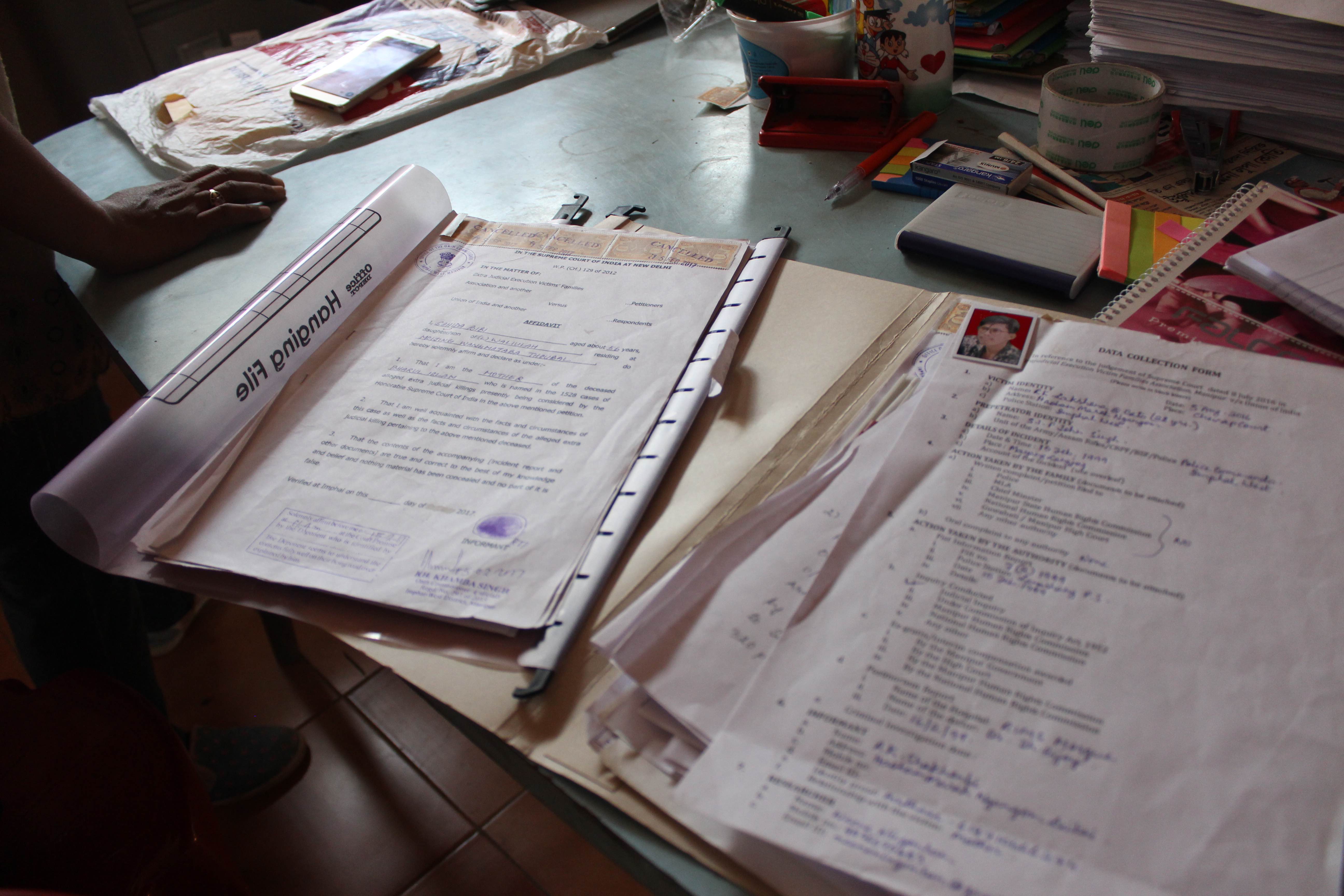
Picture these cases:
On April 3, 1991, Lalbeiklien and Saikaplien were seized from a hut in Lunthilian Village in Manipur, taken a distance away in a truck and shot dead. The police said they were killed in crossfire between the police and the Hamar People’s Convention, an organisation from Mizoram.
Fake encounter or genuine?
As recently as November 15, 2008, 38-year-old Moirangthem Birba Singh was watching a movie at Kakching Azad Talkies Hall. During the movie, he was arrested. And then he was found dead.
Fake encounter or genuine?
On April 9, 2002, 18-year-old Asem Romajit was at a barber’s shop in Pangei Bazar. He was then fired on by the 121st and 134th Battalion of the CRPF and killed.
Fake encounter or genuine?
On December 13, 2008, 21-year-old Mohammed Liyaqat Ali went to participate in a recruitment rally to join the Indian Reserve Battalion, conducted by the Manipur police. He was killed at the Awa Ching foothill near Keirao Khunou, ironically by a combined team of the Imphal East Police Commandos and 32 Assam Rifles.
Fake encounter or genuine?
On April 9, 2004, 27-year-old Konsam Amu was killed in Nongdam by the 12 Assam Rifles. He was a former militant.
Fake encounter or genuine?
On April 26, 1980, 25-year-old Irom Binodini was killed while feeding her daughter by CRPF firing.
Fake encounter or genuine?
The first case is, indeed, a fake encounter. Justice Jeevan Reddy and Justice S.C. Sen in 1997 called it an act of “Administrative Liquidation,” and said, “This type of activity cannot certainly be countenanced by the courts even in the case of disturbed areas.”
In the second, the family is hoping for justice, relying on an oral complaint they had made to their local MLA.
The third case was fortunate enough to have a judicial inquiry. The inquiry concluded that “Asem Romajit was killed by 121 and 134 Bn. CRPF at the hair cutting saloon at Pangei Bazar by firing from their service weapon directly and not from the cross firing between the insurgent and CRPF.”
In the fourth case, the family is again relying on an oral complaint to the local MLA, although they also managed to get an FIR filed.
In the fifth case of the former militant, it has been categorised for the court as a “family claimed case”. No investigation has happened in this case. It rests tenuously at the bottom of the tabular column, but the family hopes for justice anyway.
The last case of Irom Binodini happens to be one of the earliest cases collected by the EEVFAM. Her family received compensation of Rs 10,000 from the government. While this act acknowledges that a death did indeed take place, it did not go so far as to apprehend and convict her perpetrators.
In Manipur, whether ‘naharol’ or victim, the families didn’t get a chance to ask. Whether security personnel or perpetrator, the courts didn’t get a chance to find out. Whether fake encounter or genuine, we are yet to know.
§
A sledge hammer for a fly
In July last year, the court order gave a fairly defined idea of what this bench believes in. It said that the use of deadly force in retaliation can be “akin to using a sledgehammer to kill a fly”. “If there have been excesses beyond the call of duty, those members of the Manipur police or the armed forces who have committed the excesses which do not have a reasonable connection with the performance of their official duty would be liable to be proceeded against,” it said.
Manipur had been ruled for the 15 continuous years by former Congress chief minister Okram Ibobi Singh. A startling number of cases of alleged fake encounters happen to be in his constituency of Thoubal. Ibobi was dislodged only this year by BJP chief minister N. Biren. Before the February assembly elections, Biren said the BJP would focus on granting justice to those who have died in fake encounters.
But the new coalition government’s deputy chief minister, Yumnam Joykumar Singh, was the former director general of police (DGP) in Manipur. ‘These Fellows Must Be Eliminated‘ was the title of a 2008 report by Human Rights Watch (HRW) on the violence of AFSPA in Manipur. The title was taken from a statement he made, as DGP, to the HRW, where he said, “I have told my people. These fellows must be eliminated. Nothing else can cure us of this disease”. He was referring to how many militants were also extortionists.
In his office in Manipur, Joykumar recalls an incident from when he had just taken over as DGP in 2008: “In one case, militants murdered eight outsiders in cold blood. There was so much pressure. We worked overtime to catch the culprits. The moment we did, he was ready to run. Our chaps shot him dead. That sort of thing has to be done. Because a message goes out to those who kill innocent people.” He added, “At one point of time, police forgot they had a weapon with them. They were surrendering them, out of demoralisation and fear. You have to change that. I had to tell them, if militants attack you, you can absolutely retaliate with the weapon you’re holding.”
The central government too has repeatedly said that it is due to the handiness of AFSPA that Manipur has been able to find relative peace. In the ongoing case, the Supreme Court notes that the attorney general argued “that the implementation of AFSPA is necessary and that it has yielded positive results in reducing militancy in Manipur.”
Babloo Loitongbam of HRA flips the argument. “Peace has come to Manipur not because of the brutality of violence. Because of the case in Supreme Court, the state has got the message – accountability is coming,” he says. The government’s position is always cornered with a simple follow-up question: If the crackdown on militancy has worked, then why not lift AFSPA? To this, Joykumar said, “It can be done. Why not. On a trial basis. I have always said this is a draconian law. You can’t give a carte blanche. Section 4 and 6 of AFSPA needs to be modified.”
§
The memory of justice
When we met Lianhaulun in Churachandpur, he did not know that his uncle’s case was being reviewed in the Supreme Court. His uncle, Pumsuanhal, had been taking part in protests against the Khuga Dam nearby, which had displaced a number of villages in the area. At one such protest on December 15, 2005, Pumsuanhal was killed in police firing. His 77-year-old mother is too physically weak to do or so much. So it is Lianhaunlun who is collaborating with EEVFAM to follow up on this case. The family managed to file a complaint against the police and the Indian Reserve Battalion. “I’m happy to know the case is in the Supreme Court. We are from a poor family. There is very little we can do from our side. It is difficult for us to fight,” he says.
We ask him the same question we asked all families of victims – what does justice mean to you? “Our hope is that we will get some compensation. So far we have not put a memory-stone up for him. If we get some money, we can spend it on that memorial,” he says.
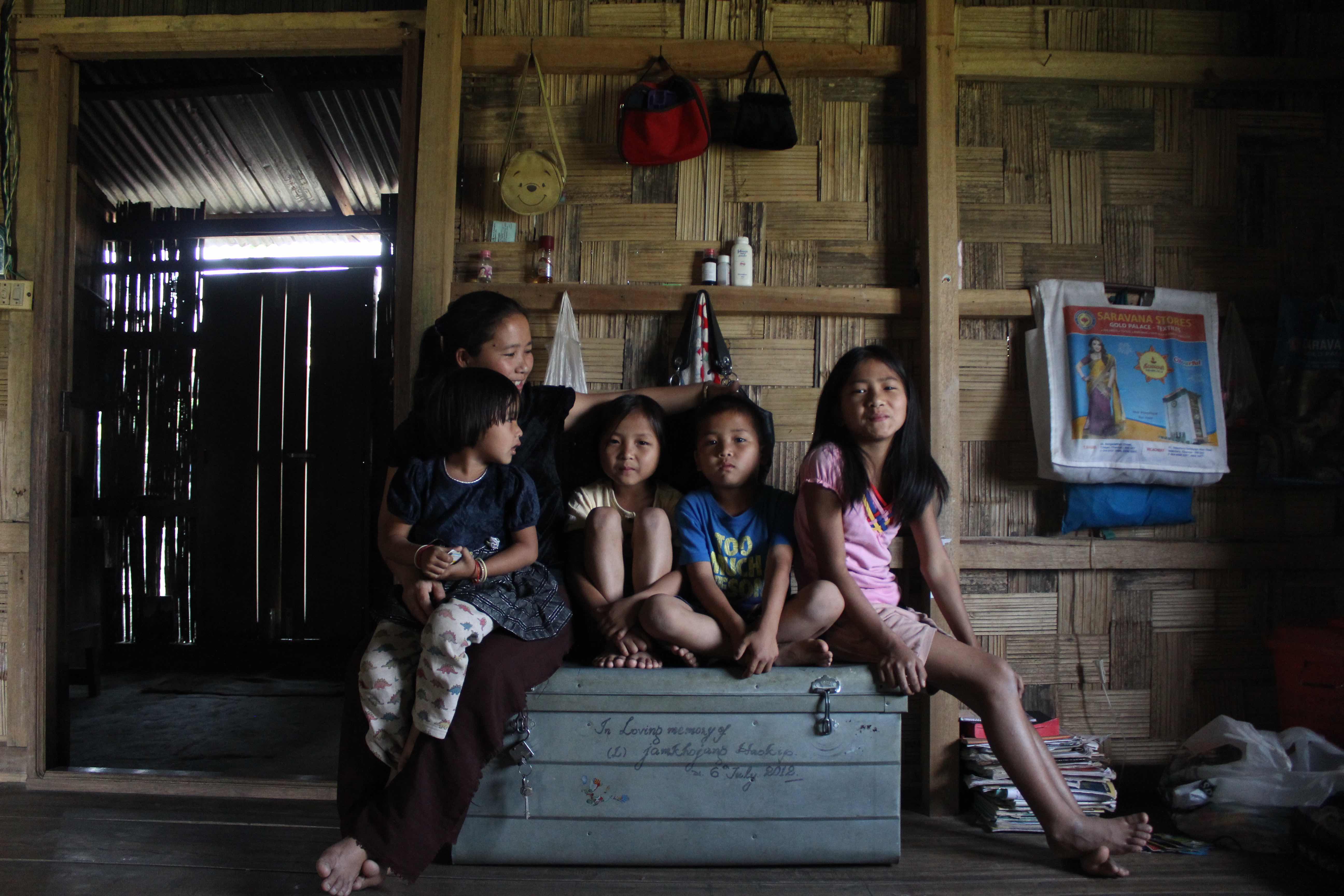
A short distance away, also in Churachandpur, Lhingjaneng Haokip invited us into her sparse and clean bamboo hut. Chubby and round faced, she is too young to join the hundreds of widows in Manipur who have lost their husbands to extra-judicial killings. And yet here she is, a widow with five young children. She was pregnant with her youngest when her husband, Jhamkojang Haokip left for work on July 2, 2012, and came back dead, with his clothes changed to military fatigues.
Unlike Lianhaulun, Lhingjaneng’s case is a new one for the EEVFAM. It has not been included in the 1,528 cases with the apex court. She shows us the postmortem report for her husband. The report lists 13 gun shots, many on his face. “How could they kill him for being an insurgent? I would have known if he was an underground militant, because he would have had to stay away from the home for training,” she says.
She opens a silver trunk to put away the files on her husband’s case. On the trunk are the words, “In loving memory of (L) Jhamkojang Haokip, 6 July 2012.” Lhingjaneng explains: “We don’t have the money to buy him a memory stone. After his funeral I thought, I will at least buy this trunk to remember my husband.”
Source: The Wire


